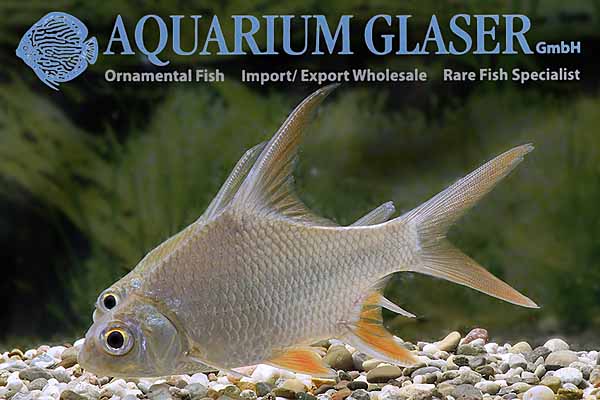Puntioplites falcifer
Smith, 1929
|
Familie: Cyprinidae Lokale Bezeichnung |
 Puntioplites falcifer ca. 12 cm -- (C) Frank Schäfer |
Typen
Holotypus: [[Type# .
Siehe: Eschmeyer, W.N., Fricke, R. & Van der Laan, R. (eds.) 2024. Catalog of Fishes electronic version
Typusfundort: Mekong, Thailand.
Etymologie
Von falcis (= Sichel oder Sense); fero (= tragen), bezieht isch auf sichelförmige vordere Rückenflossenstrahlen. (Übersetzt aus: The ETYFish Project)
Verbreitung
Mekong Becken in Laos, China (Yunnan), Thailand, unterer und mittlerer Xe Bangfai; unterer Nam Theun.
IUCN Status
|
LC Least Concern (nicht gefährdet) Mögliche Gefahren für diese Art: Wahrscheinlich ist diese Art von großen Staudämmen am Hauptstrom und an den Nebenflüssen des Mekong betroffen. |
EX Extinct (ausgestorben) EW Extinct in the Wild (in der Natur ausgestorben) CR Critically Endangered (vom Aussterben bedroht) EN Endangered (stark gefährdet) VU Vulnerable (gefährdet) NT Near Threatened (potenziell gefährdet) LC Least Concern (nicht gefährdet) RE Regionally Extinct (regional oder national ausgestorben) |
Literatur
- Smith, H.M. 1929. Notes on some Siamese fishes. Journal of the Siam Society, Natural History, Supplement 8 (1): 11-14. Zitatseite [: 11, !!]
- Roberts, T.R. 1989. The freshwater fishes of western Borneo (Kalimantan Barat, Indonesia). Memoirs of the California Academy of Sciences, 14: i-xii + 1-210. Zitatseite [:60, als Synonym von Puntioplites waandersi]
- Rainboth, W.J. 1996. FAO species identification field guide for fishery purposes. Fishes of the Cambodian Mekong. Rome, FAO. 1-265, Pls. I-XXVII. Zitatseite [:92, gültig als Puntioplites falcifer]
- Kottelat, M. 1998. Fishes of the Nam Theun and Xe Bangfai basins, Laos, with diagnoses of twenty-two new species (Teleostei: Cyprinidae, Balitoridae, Cobitidae, Coiidae and Odontobutidae). Ichthyological Exploration of Freshwaters, 9 (1): 1-128. Zitatseite [:48f|Farbfoto, Beschreibung, Vorkommen ]
- Kottelat, M. 2013. The Fishes of the Inland Waters of Southeast Asia: A Catalogue and Core Bibliography of the Fishes Known to Occur in Freshwaters, Mangroves and Estuaries. The Raffles Bulletin of Zoology, Supplement No. 27: 1–663. (PDF) Zitatseite [:148]
- Schäfer, F. 2020. Großbarben im Aquarium. Aquaristik Fachmagazin, #276, 52 (6): 6-28. Zitatseite [: 12*, 26*, Farbfotos, Übersichtsartikel, z.T. als Barbonymus puntiplites falcifer]
